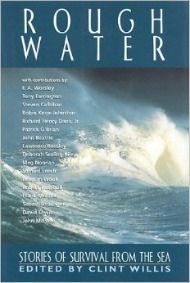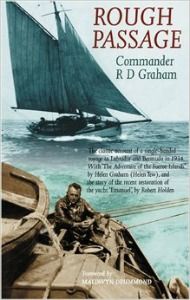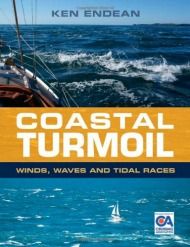Why would anyone sail in that?!" is often a question you'll hear asked when images like the one above pop up on news feeds or on TV. Embracing rough seas and standing up to stormy weather isn't the goal of most sailors, and indeed sometimes it's more the wave getting the drop on them, but as the old saying goes:
A Smooth Sea Never Made a Skilful Sailor
Heavy weather should not be something to be taken lightly, rather the quote simply means you need to be prepared should you not lack the foreknowledge to avoid impending disastrous sailing conditions. To help your tactics when taking on the open water, here is
Seachest's own list of The World's Roughest Seas:
Ocean Crossings
The non-descript, open ocean waters of the world are a constant source of tough tides, which is partly why round-the-world cruises can be such a bad idea for the easily seasick. When it comes to hurricane season, the most dangerous time for oceangoing ships is 1st June to 30th November in the Atlantic and nearly from April to December in the North Indian Basin, but with the Pacific there's different dates for different areas: Northeast Pacific (May 15th to November 30th), Australian/Southwest Pacific basin (October/November to February/March) and the Northwest Pacific (which has tropical cyclones occurring all year round!).
Drake Passage
One of the most renowned stormy seas, the 'Sea of Hoces' as it's also known is located in the southern tip of South America, covering Cape Horn, Chile and Antarctica's South Shetland Islands. This 800 km wide passage is the shortest crossing from Antartica to the rest of the world, but with no large landmass anywhere at the latitudes of the Drake Passage, there is an unimpeded flow of current carrying a huge volume of water through it. It's in a region of naturally high windspeeds and frequently rough waters that easily secure its stormy reputation.
Southern Ocean
Staying in the region, the Southern Ocean circles around Antarctica, and comprises the southern-most parts of the World Ocean. Home to frequent huge swells and many rough seas with similar magnitudes as the Drake Passage, what makes the Southern Ocean arguably more dangerous is its far less well known. To this day, the International Hydrographic Organization (IHO) has not fully identified and defined the ocean, leaving its strong up welling, westerly winds, cyclonic storms and frequently occurring threat of icebergs a problem for all would-be Arctic explorers.
Cook Strait
Considered to be as dangerous and it is unpredictable, this connecting strait between the North and South islands of New Zealand is subject to belts of wind that circle the globe around 40
° south. Strong winds produce strong waves, and the Cook Strait's 'wind tunnel' effect, with the tide elevation at the ends of the strait being almost exactly out of phase with one another, means your boat will be pelted by high water on one side, and low water on the other. On the plus side, it has become a source of key interest for future tidal power development...
Bay of Biscay
A gulf tucked in between the French and Spanish borders, its unfortunate location means that it's a must-cross for those cruising from Southampton or Dover to the Mediterranean or the Canaries, despite being home to the Atlantic's fiercest weather. it's unique position attracts powerful winds and the shallow seabed of the bay producers quite heavy wave motion. It's unpredictable, and up until recent years it was quite expected to hear news of merchant vessels foundering in its storms.
South China Sea
This part of the Pacific ocean sees the strongest typhoons, particularly from July to November. Worse however, is 'The Dangerous Ground'; a large area of the South China Sea known made dangerous by its many low islands, sunken reefs, and atolls awash; with reefs often rising abruptly from ocean depths. The definitions of The Dangerous Ground are hardly precise, it is poorly charted with considerable amounts of inaccuracy in the survey work done, and to top it off it lies in the middle of the territorial disputes that characterize the South China Sea. This is perhaps the only one of these waters that is best avoided at all costs.
So what's a skipper to do when sailing round a rough sea just isn't an option? Though hardly an extensive guide, here's some top tips for sailing rough:
- A vessel with a deep draft, low superstructure and stabilizers below the waterline (to reduce rolling) will serve you far better than a boat without them.
- Know the limits of both you as a sailor and of your boat. Even boats designed to resist strong winds can be outdone by a combination of high water and wind, raising the possibility of a rigging failure or capsize.
- Ensure all safety equipment - including flotation devices, distress signals, torches, bilge pumps and tools - are working, and is readily available should you need it.
- If sailing, know how to deal with heavy winds by learning to reef your sail, avoiding a knock down and close hauling & close reaching in high winds.
We hope some of this information informs your next sail; both the journey and its enjoyment. If you're looking for some further information on how to tackle the roughest seas,
Suddenly Overboard is a great book to keep your prepared for any unexpected weather, and accidents at sea that you may face whilst battling rough seas. If you have any words of wisdom to pass round, cast them off here in the comments, or on our
Facebook page, on
Twitter or on
Google+.


